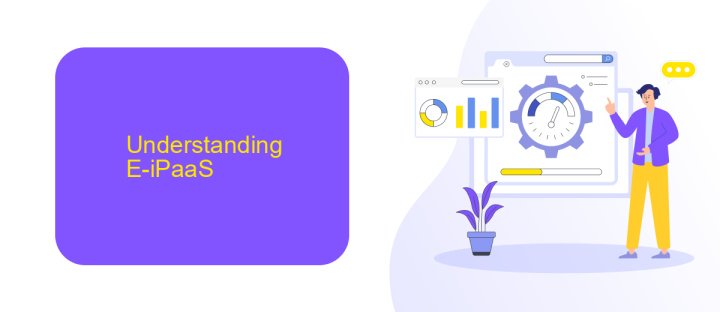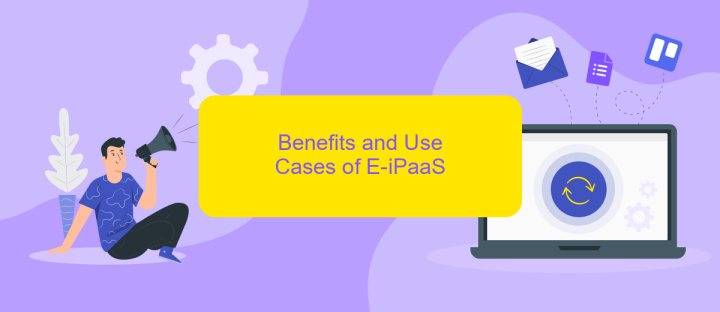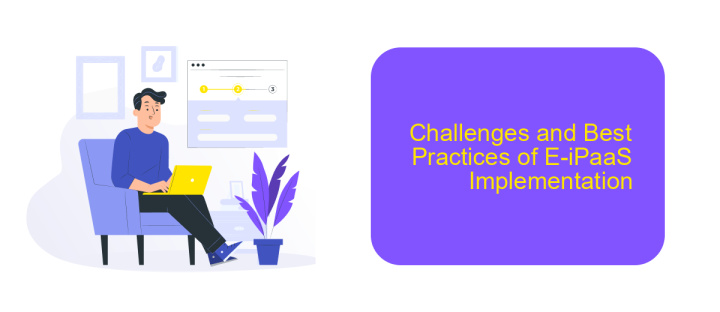E-iPaaS
E-iPaaS (Enterprise Integration Platform as a Service) is revolutionizing the way businesses connect and manage their diverse applications and data sources. By offering a cloud-based solution for seamless integration, E-iPaaS enables organizations to streamline workflows, enhance productivity, and achieve greater agility. This article explores the key features, benefits, and use cases of E-iPaaS, demonstrating its critical role in modern digital transformation strategies.
Introduction
Enterprise Integration Platform as a Service (E-iPaaS) is revolutionizing how businesses manage and integrate their various applications and data sources. By providing a cloud-based solution, E-iPaaS enables seamless connectivity and automation, reducing the complexity and cost associated with traditional integration methods.
- Streamlined integration processes
- Scalability to meet growing business needs
- Enhanced data synchronization and accuracy
- Real-time monitoring and management
One of the leading services in this space is ApiX-Drive, which offers a user-friendly interface for setting up integrations without the need for extensive coding knowledge. ApiX-Drive simplifies the process of connecting different systems, allowing businesses to focus on their core activities while ensuring that their data flows smoothly and efficiently between applications.
Understanding E-iPaaS

Enterprise Integration Platform as a Service (E-iPaaS) is a cloud-based solution designed to streamline the integration of various applications and data sources within an enterprise. It provides a unified platform for managing, developing, and deploying integration flows, enabling businesses to connect disparate systems with ease. E-iPaaS offers a range of tools and services that facilitate seamless data exchange and process automation, reducing the complexity and cost associated with traditional integration methods.
One notable example of an E-iPaaS solution is ApiX-Drive, which simplifies the process of connecting various applications and services. With ApiX-Drive, users can create automated workflows without the need for extensive coding knowledge. The platform supports a wide array of integrations, allowing businesses to synchronize data across CRM systems, marketing tools, and other enterprise applications effortlessly. By leveraging E-iPaaS solutions like ApiX-Drive, organizations can enhance operational efficiency, improve data accuracy, and accelerate digital transformation initiatives.
Benefits and Use Cases of E-iPaaS

E-iPaaS (Enterprise Integration Platform as a Service) offers numerous benefits for businesses seeking seamless integration of various applications and data sources. By leveraging E-iPaaS, organizations can streamline their workflows, enhance data accuracy, and improve overall operational efficiency. This cloud-based solution enables real-time data synchronization and reduces the complexity of managing multiple integrations.
- Scalability: E-iPaaS can easily scale to accommodate growing data volumes and additional applications.
- Cost Efficiency: Reduces the need for extensive IT infrastructure and maintenance, leading to significant cost savings.
- Flexibility: Supports a wide range of integration scenarios, including cloud-to-cloud, cloud-to-on-premises, and on-premises-to-on-premises.
- Enhanced Security: Ensures secure data transfer and compliance with industry regulations.
- Real-Time Data Processing: Enables instant data updates and synchronization across systems.
Use cases for E-iPaaS are diverse, ranging from integrating CRM and ERP systems to automating marketing workflows. For instance, ApiX-Drive is a service that simplifies the setup of integrations, allowing businesses to connect various applications without needing extensive technical expertise. This makes it easier to automate tasks like data entry, lead management, and reporting, ultimately boosting productivity and decision-making capabilities.
Challenges and Best Practices of E-iPaaS Implementation

Implementing an Enterprise Integration Platform as a Service (E-iPaaS) can be challenging due to its complexity and the need for seamless integration across various systems. One of the primary challenges is ensuring data consistency and real-time synchronization between different platforms. Additionally, security concerns, especially around data privacy and compliance, are paramount and must be addressed comprehensively.
Another significant challenge is the customization and configuration of integrations to meet specific business needs. This often requires specialized skills and a deep understanding of both the source and target systems. Furthermore, managing and monitoring these integrations to ensure they perform optimally can be resource-intensive.
- Thoroughly assess business requirements before selecting an E-iPaaS solution.
- Choose a platform that offers robust security features and compliance certifications.
- Utilize services like ApiX-Drive to simplify the integration process and reduce the need for extensive coding.
- Implement comprehensive monitoring and alert systems to manage integrations effectively.
- Provide ongoing training and support for the IT team to handle the platform efficiently.
By following these best practices, organizations can mitigate the challenges associated with E-iPaaS implementation. Leveraging tools like ApiX-Drive can significantly streamline the integration process, ensuring that businesses can focus on their core operations while maintaining a high level of data integrity and security.
Future of E-iPaaS
The future of E-iPaaS (Enterprise Integration Platform as a Service) is poised to revolutionize how businesses handle data integration and workflow automation. As companies continue to adopt cloud-based solutions, the demand for seamless integration between various applications and services is growing exponentially. E-iPaaS will evolve to offer more advanced features, such as AI-driven data mapping, real-time analytics, and enhanced security protocols. These advancements will enable organizations to streamline their operations, reduce manual intervention, and improve overall efficiency.
Furthermore, the rise of low-code and no-code platforms, like ApiX-Drive, will democratize the integration process, allowing even non-technical users to set up and manage complex workflows. ApiX-Drive, for instance, simplifies the integration of various applications without the need for extensive coding knowledge, making it accessible to a broader audience. As these tools become more sophisticated, they will enable businesses to quickly adapt to changing market conditions and technological advancements, ensuring they remain competitive in an increasingly digital landscape.
FAQ
What is E-iPaaS?
How does E-iPaaS simplify integration processes?
What are the key benefits of using E-iPaaS?
Can E-iPaaS handle real-time data integration?
What types of integrations can be achieved with E-iPaaS?
Routine tasks take a lot of time from employees? Do they burn out, do not have enough working day for the main duties and important things? Do you understand that the only way out of this situation in modern realities is automation? Try Apix-Drive for free and make sure that the online connector in 5 minutes of setting up integration will remove a significant part of the routine from your life and free up time for you and your employees.

